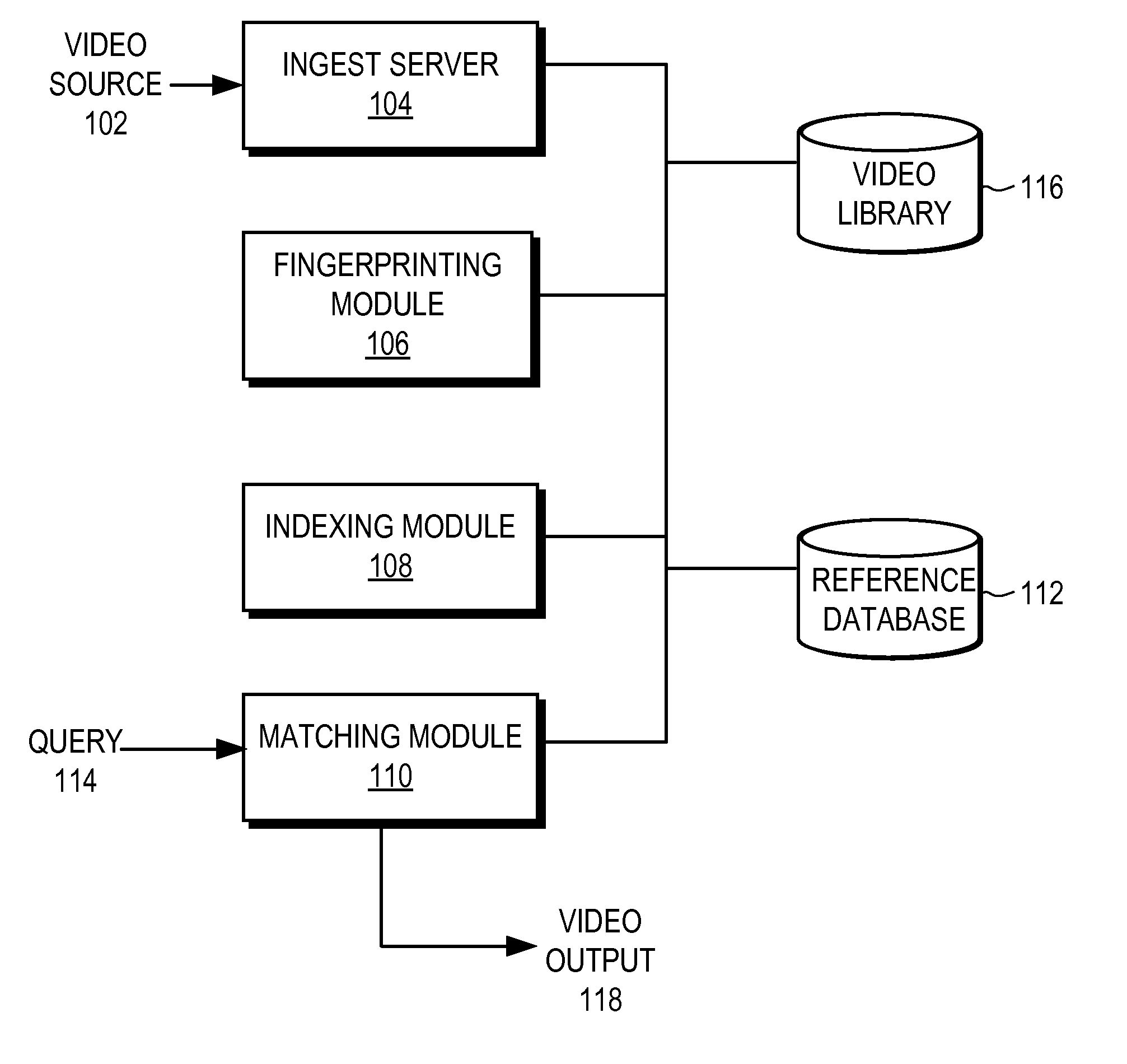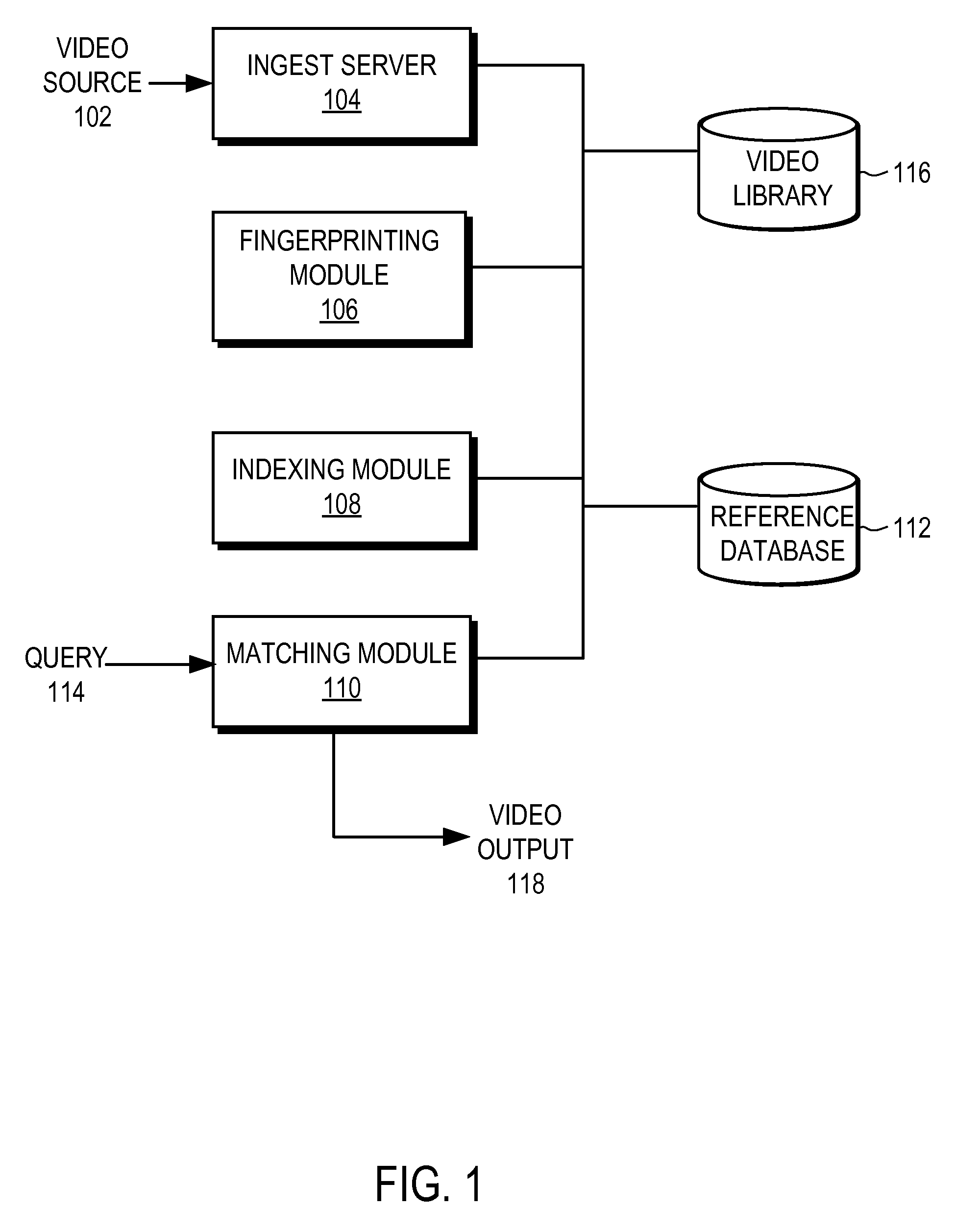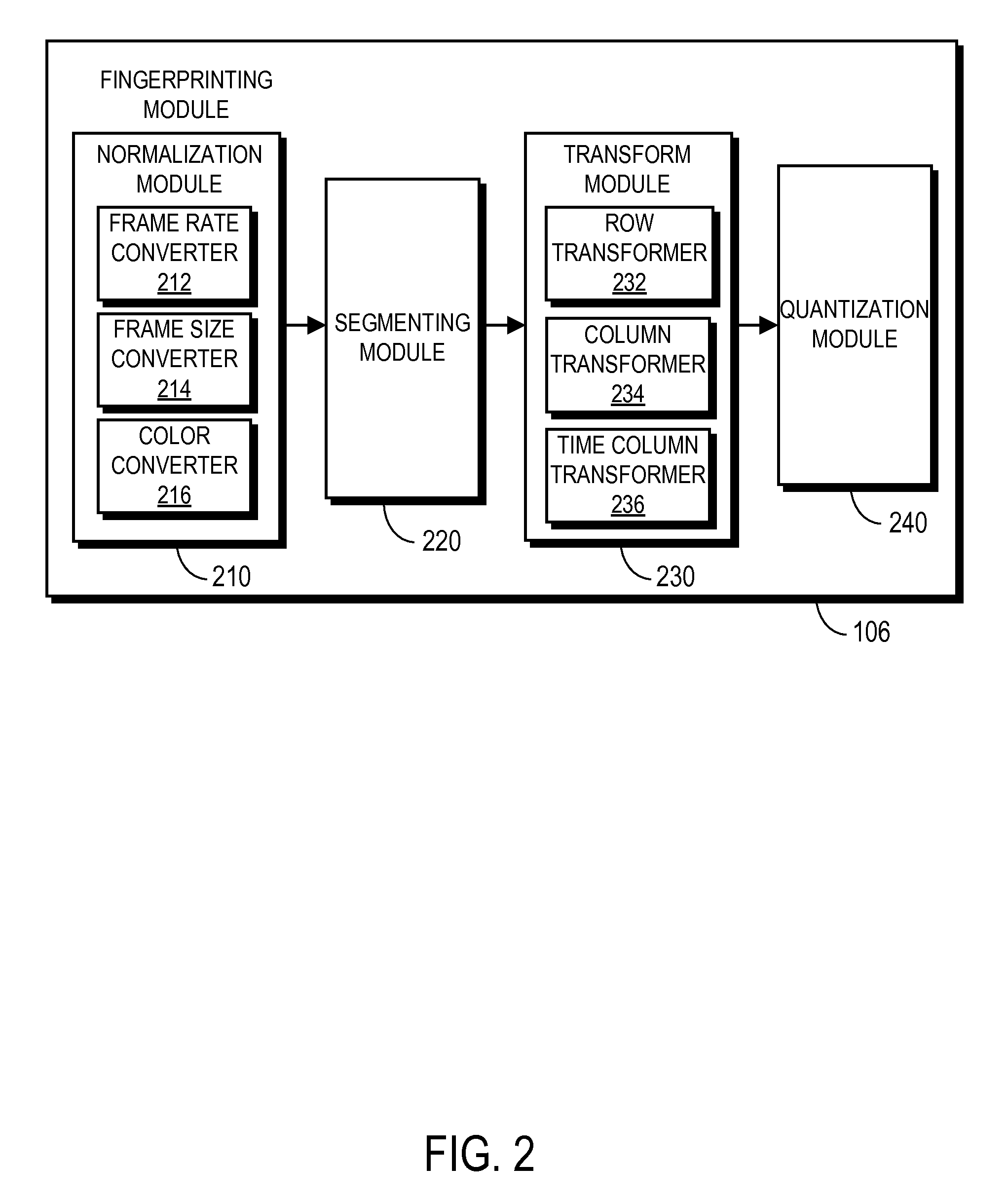Three-dimensional wavelet based video fingerprinting
a fingerprinting and wavelet technology, applied in the field of video processing, can solve the problems of insufficient identification information, difficulty in accurately identifying video content, and difficult management of these libraries, and achieve the effect of improving search results, quick and efficient identification of video conten
- Summary
- Abstract
- Description
- Claims
- Application Information
AI Technical Summary
Benefits of technology
Problems solved by technology
Method used
Image
Examples
Embodiment Construction
[0027]FIG. 1 is a high-level block diagram illustrating a system for comparing video content. The system comprises an ingest server 104, a fingerprinting module 106, an indexing module 108, a matching module 110, a reference database 112, and a video library 116. In alternative configurations, different or additional modules may be used.
[0028]The ingest server 104 is adapted to receive one or more videos from a video source 102. The video source 102 can be, for example, a client computer coupled to the ingest server 104 through a network. In this configuration, a user can upload video content to the ingest server 104 from a remote location. Alternatively, the video source 102 can be a database or other storage device coupled to the ingest server 104. For example, the video source 102 can be a video storage medium such as a DVD, CD-ROM, Digital Video Recorder (DVR), hard drive, Flash memory, or other memory. The ingest server 104 may also be coupled directly to a video capture system...
PUM
 Login to View More
Login to View More Abstract
Description
Claims
Application Information
 Login to View More
Login to View More - R&D
- Intellectual Property
- Life Sciences
- Materials
- Tech Scout
- Unparalleled Data Quality
- Higher Quality Content
- 60% Fewer Hallucinations
Browse by: Latest US Patents, China's latest patents, Technical Efficacy Thesaurus, Application Domain, Technology Topic, Popular Technical Reports.
© 2025 PatSnap. All rights reserved.Legal|Privacy policy|Modern Slavery Act Transparency Statement|Sitemap|About US| Contact US: help@patsnap.com



